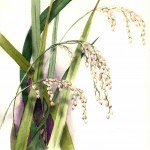Rice
The History of Sake: Takamine and Today (with tweets) · pcronald · Storify.
F. Cunningham gave a great talk today at the ASM 2012 meeting on the discovery of provitamin A synthesis, Vitamin A deficiency and the creation of Golden Rice. Read my twitter stream here.
Thai Youth Seek a Fortune Away From the Farm - NYTimes.com.
This week, the G20 Agriculture Ministers gathered for their first-ever meeting to discuss potential measures to address price volatility and record high food prices. The key to any long-term solution is acknowledging that we need to empower the very people whose lives are most affected by food shortages. Three-quarters of the world's poorest people get their food and income by farming small plots of land. The potential of small farmers for getting us out of this and future food crises cannot be overstated.
Today, we find that millions of lives depend upon the extent to which agricultural…
The last common ancestor of plants and animals may have lived 1 billion years ago. Plants and animals have occasionally exchanged genes, but for the most part, have countered selective pressures independently. Microbes (bacteria, eukaryotes, and viruses) were omnipresent threats, influencing the direction of multi-cellular evolution. Receptors that detect molecular signatures of infectious organisms mediate awareness of non-self, and are integral to host defense in plants and animals alike. The discoveries leading to identification of these receptors and their ligands followed a similar…
Korea has a 5000 year history of food and farming. How much can a nine-year old and her mother learn on a two week visit to this land of miracles?
For the first few nights we stayed in a tiny room in a traditional Korean house called a "Hanok" house. There is a courtyard that everyone shares that the owners have filled with lots of stuff including a rabbit named Mimi. In this quiet place, one can imagine ancient times before the rebirth of this powerful nation that was almost totally destroyed by the Korean war (1950-1953). Now, although most cities are dominated by massive buildings and…
Changes in human diet driven by cultural evolution seem to be at the root of many relatively recently emerged patterns of genetic variation. In particular, lactase persistence and varied production of amylase are two well known cases. Both of these new evolutionary genetic developments are responses to the shift toward carbohydrates over the last 10,000 years as mainstays of caloric intake. Rice and wheat serve as the foundations of much of human civilization. It is notable that both China and India are divided into rice and wheat (or millet) belts, so essential are modes of agriculture in…




